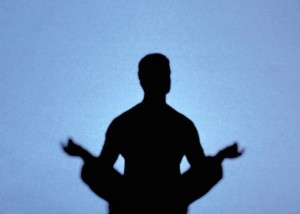In our last blog introducing Yamas and Niyamas, we started to explore a few of the non-physical aspects of yoga. Many people find our English yoga classes in Berlin during their search for fitness or physical rehabilitation. However, because yoga has such mentally and emotionally restorative effects, many people find that over time they are able to not only make peace with their own bodies but with the world around them.
With a total of 10 ethical guideposts (Yamas and Niyamas have 5 each), Asteya is the third Yama, and it means ´not stealing´. This is a more complex concept than the translation conveys. Was Patanjali talking about stealing a loaf of bread to feed yourself or your family? We believe Asteya is not about stifling need, it is about restraining greed. Asteya guides students to ask themselves: do I really need this? Am I hoarding materials goods out of fear, or taking out of honest need? Can this body, ecosystem or relationship sustain my demands upon it? Asteya challenges us to believe that there is enough in the world to feed us all, if only we can learn to share.
Where do you take, or give, more than your share? What is the effect of this behavior on yourself and your community?
Brahmacharya is the fourth Yama, and one of the most widely misunderstood. It is translated into English as ´celibacy´, but can also be looked at as a ´conscious use of energy, especially sexual´.
The sexual energy can be seen as a sacred force that should only be used responsibly and wisely. Because pleasure, desire and attraction are such powerful feelings that can bring great pleasure, they can be used to manipulate, violate and hurt people very, very deeply. Instead, it challenges students to make their sexual decisions consciously, in a way that feels good for everyone involved.
How could you live your sexual life with more honesty, integrity and pleasure?
Aparigraha is the last Yama, and it means ´non-comparing´. This Yama is about jealousy, and acceptance. Patanjali recognized that the human mind has a tendency to compare, in order to understand. In our Kreuzberg yoga classes we often tell students to observe without analyzing. Unfortunately, this tendency easily slides into envy and jealousy, because, as we all know, ´the grass is always greener on the other side´. Aparigraha guides our focus back to where it should be: our own sphere. Envying other people is distracting and depressing. In asana practice, this means that, even if your neighbor can do the poses perfectly and you feel like a penguin with two left feet, you practice keeping your focus on your own body and your own experience. You let jealousy arise if it needs to, and you also let it dissipate when it has run its´ course. You measure yourself by the only real standard that you have- your own.
How have envy and jealousy affected your life?








 of all the falling stars I have seen in my life. This thought brings me onto all the wishes I have made on those stars. That, in turn, makes me think of unfulfilled wishes, which reminds me that I’m unhappy. When I think about being unhappy, that tenses up my chest. Feeling the tightness in my chest reminds me that I have to buy an inhaler for my asthma- and why am I unhappy anyway?…
of all the falling stars I have seen in my life. This thought brings me onto all the wishes I have made on those stars. That, in turn, makes me think of unfulfilled wishes, which reminds me that I’m unhappy. When I think about being unhappy, that tenses up my chest. Feeling the tightness in my chest reminds me that I have to buy an inhaler for my asthma- and why am I unhappy anyway?…







